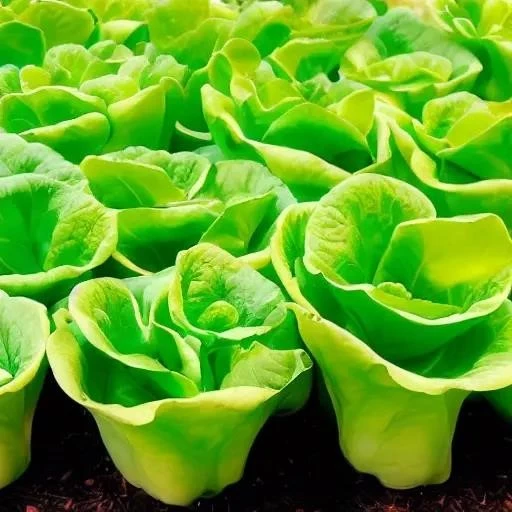In a world increasingly focused on sustainability and fresh, wholesome food, the simple act of cultivating your own garden has never felt more empowering. Imagine stepping into your backyard, basket in hand, and plucking crisp, vibrant lettuce leaves, still dewy with morning moisture, moments before they grace your dinner plate. This isn’t merely a dream; it’s an achievable reality, bringing unparalleled freshness and flavor directly to your table. Growing lettuce, often perceived as an elementary gardening task, actually offers a profound journey into horticultural finesse, promising an abundant yield with just a few expert insights and a touch of dedicated care.
The allure of homegrown greens extends far beyond convenience; it’s about reclaiming control over what nourishes your body, reducing your carbon footprint, and experiencing the profound satisfaction of nurturing life from seed to harvest. Many aspiring gardeners, however, encounter common pitfalls that can diminish their lettuce yield or quality. From selecting the wrong varieties for their climate to battling persistent pests, these challenges can feel daunting. Fortunately, by embracing a few key strategies and understanding the foundational needs of this remarkably versatile leafy green, you can cultivate a thriving lettuce patch that consistently delivers succulent, nutritious leaves, truly revolutionizing your culinary landscape. Let’s delve into the core principles that elevate simple gardening into an art form.
| Category | Key Information | Optimal Conditions |
|---|---|---|
| Soil Requirements | Well-draining, rich in organic matter. | Loose, loamy soil with excellent drainage. Amend with compost or aged manure to boost fertility. |
| Sunlight Exposure | Prefers full sun to partial shade. | At least 6 hours of direct sunlight daily for robust growth, but benefits from afternoon shade in hot climates to prevent bolting. |
| Watering Needs | Consistent moisture is crucial. | Keep soil consistently moist but not waterlogged. Water deeply and regularly, especially during dry spells, to encourage tender leaves. |
| Temperature Range | Cool-season crop. | Thrives in temperatures between 45-75°F (7-24°C). Protect from extreme heat and frost. |
| Soil pH Level | Slightly acidic to neutral. | Ideal pH range of 6.0 to 7.0. A soil test kit can help determine current levels and guide amendments. |
| Planting Depth & Spacing | Shallow planting, adequate spacing. | Plant seeds ¼ inch deep. Space plants 6-12 inches apart, depending on the variety, to ensure good air circulation. |
Mastering the Foundation: Soil and Seed Selection
The journey to an extraordinary lettuce harvest begins, quite literally, from the ground up. Crafting the perfect growing medium is paramount, as lettuce, with its delicate root system, thrives in rich, well-draining soil abundant in organic matter. Think of your garden bed as a gourmet buffet for your plants; the more nutritious and appealing it is, the more robust and flavorful your lettuce will become. Incorporating generous amounts of compost or well-rotted manure not only enhances fertility but also dramatically improves soil structure, facilitating optimal air and water penetration. Expert horticulturists frequently emphasize that healthy soil is the cornerstone of any successful garden, mitigating many common issues before they even arise.
Beyond soil, selecting the right lettuce varieties for your specific climate and taste preferences is a remarkably effective strategy. The world of lettuce is wonderfully diverse, encompassing crisp romaines, tender butterheads, vibrant loose-leaf types, and even resilient oakleafs. Each variety possesses unique characteristics, from heat tolerance to disease resistance, making informed choices incredibly beneficial. For instance, in warmer regions, heat-tolerant varieties like ‘Salad Bowl’ or ‘Black Seeded Simpson’ can extend your harvesting season significantly, while cooler climates allow for a broader range of options. By carefully researching and choosing varieties suited to your environmental conditions, you are proactively setting the stage for a bountiful and rewarding yield, cultivating a diverse tapestry of greens.
Cultivating Perfection: Watering, Light, and Pest Management
Consistent moisture is perhaps the most critical factor in achieving crisp, succulent lettuce leaves. Erratic watering can lead to bitterness or premature bolting, where the plant sends up a flower stalk and ceases leaf production. Maintaining a steady, even moisture level in the soil is crucial, akin to a gentle, continuous hydration regimen. Watering deeply and regularly, especially during dry spells, encourages a strong root system and prevents stress. However, avoid overwatering, which can lead to root rot; the soil should be moist, not waterlogged. Employing a drip irrigation system or soaker hoses can be incredibly efficient, delivering water directly to the roots while minimizing evaporation and leaf wetness, thereby reducing the risk of fungal diseases.
Light exposure also plays a pivotal role. While lettuce generally appreciates full sun, providing some afternoon shade in intensely hot climates can prevent scorching and extend the harvest window. Think of it as creating a microclimate where your lettuce can flourish, protected from the harshest rays. Moreover, diligent, organic pest management is essential. Common adversaries like aphids and slugs can quickly decimate a promising crop. Implementing preventative measures such as companion planting with marigolds or applying neem oil can deter pests naturally. Regularly inspecting your plants for early signs of infestation and acting swiftly with organic solutions, like a strong spray of water to dislodge aphids, will safeguard your harvest without resorting to harmful chemicals, ensuring your lettuce remains pure and wholesome.
Harvesting and Beyond: Extending Your Bounty
The true joy of growing lettuce culminates in the harvest, and understanding the ‘cut-and-come-again’ method is a game-changer for continuous supply. Instead of pulling the entire plant, simply snip off the outer leaves, allowing the inner leaves to continue growing. This method ensures a steady stream of fresh greens over several weeks, maximizing your yield from each plant. Harvesting in the morning, when leaves are plump with moisture, guarantees the best flavor and crispness. This sustainable approach to harvesting embodies the forward-looking ethos of modern gardening, promoting efficiency and prolonged productivity.
To truly extend your lettuce season, consider succession planting – sowing small batches of seeds every two to three weeks. This ensures a continuous supply rather than an overwhelming glut followed by a barren patch. Furthermore, exploring season extension techniques like cold frames, row covers, or even growing in containers indoors during colder months can allow you to enjoy homegrown lettuce almost year-round. “By integrating these innovative strategies, home gardeners are not just growing food; they are cultivating resilience and self-sufficiency,” notes Dr. Eleanor Vance, a leading expert in urban agriculture, highlighting the profound impact of these practices. This optimistic vision for our collective future underscores the persuasive power of sustainable gardening, transforming humble plots into vibrant, productive ecosystems.
Embracing the Future of Fresh
Ultimately, mastering lettuce gardening tips isn’t just about achieving a bountiful harvest; it’s about embracing a lifestyle of freshness, sustainability, and personal connection to the food we consume. The journey from a tiny seed to a vibrant, edible plant is a powerful testament to nature’s enduring generosity and our capacity to nurture it. By applying these professional, engaging, and remarkably effective techniques—from meticulous soil preparation and thoughtful variety selection to strategic watering and sustainable harvesting—you are not merely tending a garden; you are cultivating a healthier future, one crisp, flavorful leaf at a time. So, grab your trowel, prepare your soil, and embark on this incredibly rewarding adventure. Your taste buds, and the planet, will thank you.





